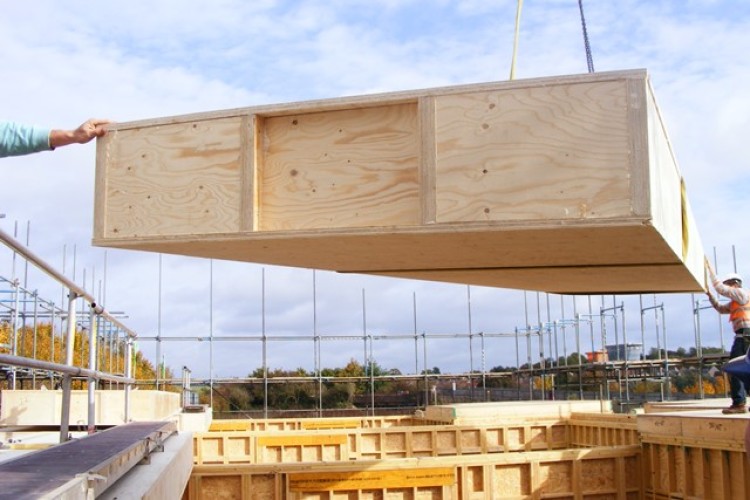At issue is the definition of 'standard construction'.
A survey of 20 insurance companies by the specialist risks team at broker Inspire Insurance found that more than half of them were reluctant to insure works using timber frame construction.
Other said that they would look to cover timber frame construction, but had inner limits for contract sizes ranging from £100,000 to £1m.
A few insurers said that they would only consider cover on a case-by-case referral basis.
But none had a specific policy to cover timber frame construction without referral or prior acceptance from their underwriters.
Contract works insurance (CAR) specifically insures the contractor for losses of site materials and the costs associated with the reinstatement of the works following a loss relating to an insured event on-site such as a storm, flood, fire or theft.

Insurers are looking to cover risks where the construction method is ‘standard’, which in the insurance industry is defined as being “constructed of brick or concrete with a tiled or slate roof”.
Timber frame construction (TFC) falls under insurers definition of non-standard construction, as it’s a wooden structure with a brick skin or exterior covered with cladding.
Misinterpretation and lack of understanding of the latest building methods from insurance brokers is the source of most of the errors, Inspire Insurance says. When arranging cover for clients, brokers still ask questions such as “is the project of standard construction?” with no acknowledgement that this definition needs updating. Many construction firms have been using timber construction or other similar modular systems for years and therefore consider TFC as perfectly standard construction. To the insurer or broker, they will have been supplied with what they consider to be inaccurate information, and will then provide a quotation on an inaccurate basis.
The key issue here is that the construction industry and the insurance industry deem standard construction as different things. Brokers and insurance providers need to make more of an effort to understand the true method and system of construction in order to ensure their clients are properly covered.
If a claim were to arise, the insurer would appoint a loss adjuster to assess the claim. This process would involve a review of the submitted information at the quotation stage. If the risk was submitted as ‘standard construction’, but later discovered as timber frame construction, this would invalidate the policy, leaving the policy holder in a precarious position.
Becky Mascord, sureties & specialist risks manager at Inspire Insurance, said: “Contract works policies can be fairly complex with a multitude of factors to consider, from the construction method employed to existing structures on-site. There’s also the need for joint names policies to underpin the JCT or NEC contract requirements. With new building systems appearing in the market and a need for sustainability, the insurance market has been hesitant and reserved while it waits to see if there are any issues which would increase the risk associated with them.”
Got a story? Email news@theconstructionindex.co.uk



